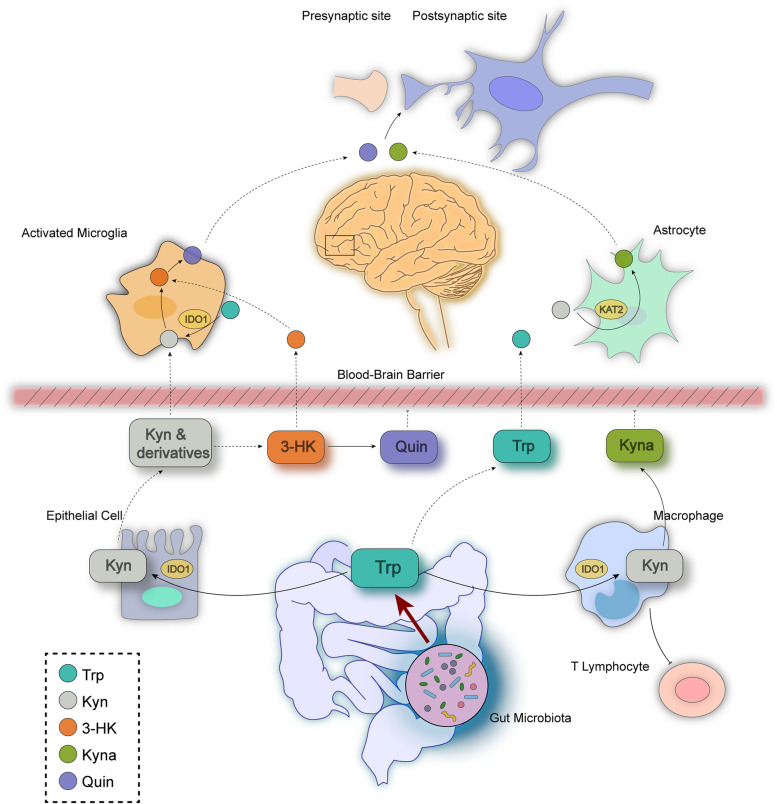Fig. 12.
A schematic depicting the roles of the gut microbiota in CRS-induced depression-like behavioral changes along the microbiota-gut-brain axis. The abundance of Ri.is rich in healthy adolescents, decreased in adolescents with depression, and reversed after sertraline treatment. The GM (from the feces of healthy adolescents and consisting of Ri.) exerts beneficial effects by ameliorating CRS-induced perturbation of the Trp-Kyn metabolic pathway. These effects are characterized by the increased conversion of Trp to 5-HT, and reciprocally, decreased toxic metabolite levels (Quin and 3-HK) that mechanistically unravel as the levels of TPH2/1 and KAT2 increase, along with decreased expression of IDO1 and 3HAO. The ameliorated colonic epithelial cell impairment combined with the improved KP metabolism driven by Ri. facilitated the pronounced protection of synaptic plasticity and improved glial activities, thus providing a novel therapeutic strategy for depression intervention

